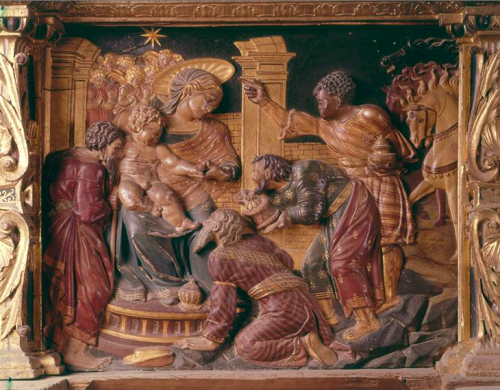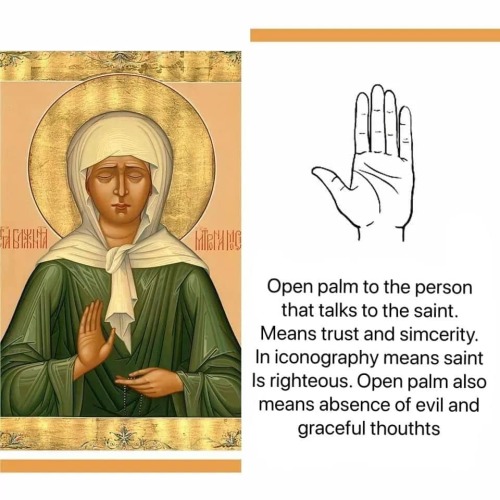Doing Some Studies Of Medieval Helmets

doing some studies of medieval helmets <3
More Posts from Babel2001 and Others
In what follows, however, I want to draw attention to a context where women had a role that was culturally and socially significant and where consequently some effort was made to police the relations that they formed with one another in terms that implicated the erotic. Anchorites were men or women who attempted to mimic the eremitic lifestyle of the desert fathers by dedicating themselves to a life of solitary confinement in a cell or “anchorhold,” usually under the spiritual direction of a bishop. While the reclusive life was adopted by individuals from the early Middle Ages until well into the sixteenth century, statistical surveys have shown that in England anchoritism reached its apogee in the thirteenth century and that, in this period, women adopting the lifestyle outnumbered men by a ratio of roughly four to one. Although, on the surface, the solitary nature of Journal of Medieval Religious Cultures the anchorite’s vocation seems to preclude the kinds of socially valued and politically potent relationships that characterize premodern discourses of male friendship, in England at least the centrality of anchorites to medieval communities is apparent. English anchoritism was a fundamentally social phenomenon, sustained by networks of patronage, material support, and verbal and textual interaction; the relationships forged among recluses, and with others beyond the confines of the cell, potentially possessed an importance beyond mere practical necessity. If, as Robert Hasenfratz has recently put it, “many anchorites withdrew from the world only to find themselves in the center of village life,” the anchorhold is best understood not simply as a space of physical isolation but also as a transactive site, a location within which bonds could be formed and networks sustained. Contemporary discourses of friendship may thus have exerted an influence on the lives of individuals who, on another level, remained dead to the world.
Robert Mills. “GENDER, SODOMY, FRIENDSHIP, AND THE MEDIEVAL ANCHORHOLD.” Journal of Medieval Religious Cultures 36, no. 1 (2010): 1–27. https://doi.org/10.5325/jmedirelicult.36.1.0001.

Everyone liked the color charts I test printed for Basilisk so much, I felt compelled made a nice version! Great for anyone that has an interest in Risograph printing, historical pigments, or weird medieval marginalia.
(buy it here)


Crivelli, Carlo. “St. George,” 1472. Metropolitan Museum of Art. New York.

In the Middle Ages, it was very common to wear a book case on the belt. Book of Hours, Bible, Breviary etc and they were thus at your fingertips.
This one is Italian, made between 1465 and 1485, in nicely worked leather.
In the sixteenth century and for a long time afterwards, in short, the Middle Ages was never simply a chronological concept, never simply a past time firmly fixed in the past. It was an ideological state of being, a state of historical development that might return and in fact could be re-entered much more easily than it could be left behind. Sermons of the period repeatedly warn against precisely this possibility: John Jewel, bishop of Salisbury under Elizabeth, was one who preached vigilance against Catholics who might bring back darkness, concerned that those who “rauine and spoyle the house of God” and by means of whom “forraine power, of which this realme by the mercie of God is happely delyuered, shall agayne be brought in vpon vs,” and warning that “Suche thinges shalbe done vnto vs, as we before suffered: the truth of God shalbe taken away, the holy scriptures burnt and consumed in fire.” The overall mode here might be an admonitory subjunctive, but the simple future tenses rhetorically propose something that will happen.
Later, when interest in the medieval period was revived in the second half of the eighteenth century, the original threat of a Middle Ages that might return had greatly diminished. In the eighteenth century, as Linda Colley has argued, Great Britain was consolidating itself as a protestant nation and a British Empire was being founded in the 1760s on the gains made in the Seven Years War. If Britain still demonised Catholicism, it nevertheless did so without quite the same sense, as in Elizabethan England, that Catholicism was always set to pounce on an unwary nation. It was then possible for such ministers of the Church of England as Thomas Percy to revive interest in the Middle Ages without provoking fears of an immediate lapse into Catholic superstition. It was possible for people to construct around themselves renewed medieval spaces – as Horace Walpole did with his house at Strawberry Hill – without threatening the immediate return of the medieval repressed. Hence the foundations were laid for a more scholarly approach to the Middle Ages in the 1760s, the period known as the Medieval or Romantic revival.
The initial impulses of the revival grew out of antiquarianism. In the eighteenth century all kinds of antiquities became the focus of interest – neolithic and Iron Age remains, coins, ballads and early poetry, folklore – as part of a general turn to the primitive. There was then a discovery of the past, in some cases quite literally a dis-covering as artefacts were unearthed, manuscripts retrieved, old tombs broken open. Out of disparate antiquarian impulses arose, in the medievalist sphere, such classic works as Richard Hurd’s Letters on Chivalry and Romance (1762); Thomas Percy’s ballad collection, The Reliques of Ancient English Poetry (1765); Horace Walpole’s novel, The Castle of Otranto (1764), Thomas Tyrwhitt’s edition of Chaucer’s Canterbury Tales (1775), and the three-volume scholarly work by Thomas Warton, History of English Poetry (1774–81).
[...]
Even as artefacts were dug out of the ground, oral ballads transcribed, and manuscripts retrieved from oblivion, the condition of this so-called revival was that nothing would actually come back to life. The Medieval Revival, by transforming the Middle Ages into a new object of study, in fact revived nothing, but rather secured the period as part of the dead past. This was History. At least implicit in this antiquarianism was the underlying eighteenth-century sense of historical progress; nothing had ever reached such a state of improvement as it now enjoyed. Correspondingly, there was little threat that the past might return. Medieval studies, which grew out of the amateur efforts of Percy, Scott, and others, would eventually deliver the Middle Ages as a historical period, fixed in the past.
And yet, acceptable as an interest in the Middle Ages became in the course of the nineteenth century, a strange temporality, as I want to show here, has persisted in all eras in ideas of the Middle Ages. “Historical linearity,” Bettina Bildhauer and Anke Bernau write, “quickly proves an unsatisfactory model when seeking to understand contemporary investments in the medieval past.” And while they refer specifically to films about the Middle Ages, the remark is more generally true. We might think of the vision of a discontinuous history that results as a queer one. Carolyn Dinshaw, thinking in particular of mystical experience and Margery Kempe, writes: “in my view a history that reckons in the most expansive way possible with how people exist in time, with what it feels like to be a body in time, or in multiple times, or out of time, is a queer history – whatever else it might be.”
Matthews, David. “‘Welcome to the Current Middle Ages’: Asynchronous Medievalism.” In Medievalism: A Critical History. http://www.jstor.org/stable/10.7722/j.ctt6wpbdd.9


Juan de Balmaseda
Carved Predella: Adoration of the Magi
Spain (c. 1516-1525)
Polychrome Wood, 68 x 83 cm.
Palencia, Seo. Capilla de San Ildefonso.
The Image of the Black in Western Art Research Project and Photo Archive, W.E.B. Du Bois Institute for African and African American Research, Harvard University
-
 jevilsjester5000 liked this · 1 month ago
jevilsjester5000 liked this · 1 month ago -
 lilonionlad liked this · 1 month ago
lilonionlad liked this · 1 month ago -
 ilikecrowss liked this · 1 month ago
ilikecrowss liked this · 1 month ago -
 beckoningsike-o-phant liked this · 1 month ago
beckoningsike-o-phant liked this · 1 month ago -
 bethrnoora liked this · 2 months ago
bethrnoora liked this · 2 months ago -
 miliabyntite reblogged this · 2 months ago
miliabyntite reblogged this · 2 months ago -
 miliabyntite liked this · 2 months ago
miliabyntite liked this · 2 months ago -
 average-crazy-fangirl liked this · 2 months ago
average-crazy-fangirl liked this · 2 months ago -
 crynwr-drwg reblogged this · 2 months ago
crynwr-drwg reblogged this · 2 months ago -
 crynwr-drwg liked this · 2 months ago
crynwr-drwg liked this · 2 months ago -
 damefruit liked this · 6 months ago
damefruit liked this · 6 months ago -
 mets-negative reblogged this · 6 months ago
mets-negative reblogged this · 6 months ago -
 mets-negative liked this · 6 months ago
mets-negative liked this · 6 months ago -
 dnasdrawrof reblogged this · 8 months ago
dnasdrawrof reblogged this · 8 months ago -
 dnasdrawrof liked this · 8 months ago
dnasdrawrof liked this · 8 months ago -
 urdrscribbles liked this · 8 months ago
urdrscribbles liked this · 8 months ago -
 murkycat liked this · 10 months ago
murkycat liked this · 10 months ago -
 hekeepsmeworm reblogged this · 11 months ago
hekeepsmeworm reblogged this · 11 months ago -
 wayfinder21 liked this · 1 year ago
wayfinder21 liked this · 1 year ago -
 sharcorn liked this · 1 year ago
sharcorn liked this · 1 year ago -
 give-me-your-guacamole liked this · 1 year ago
give-me-your-guacamole liked this · 1 year ago -
 hermanngottlaid liked this · 1 year ago
hermanngottlaid liked this · 1 year ago -
 tinycollectivetrash reblogged this · 1 year ago
tinycollectivetrash reblogged this · 1 year ago -
 tinycollectivetrash liked this · 1 year ago
tinycollectivetrash liked this · 1 year ago -
 ech0-1409 liked this · 1 year ago
ech0-1409 liked this · 1 year ago -
 ech0-1409 reblogged this · 1 year ago
ech0-1409 reblogged this · 1 year ago -
 omaano reblogged this · 1 year ago
omaano reblogged this · 1 year ago -
 knighttobe reblogged this · 1 year ago
knighttobe reblogged this · 1 year ago -
 tomato-bird-art liked this · 1 year ago
tomato-bird-art liked this · 1 year ago -
 vrolik liked this · 1 year ago
vrolik liked this · 1 year ago -
 axe-cution liked this · 1 year ago
axe-cution liked this · 1 year ago -
 sir-kettle-of-countertop liked this · 1 year ago
sir-kettle-of-countertop liked this · 1 year ago -
 cheezbot liked this · 1 year ago
cheezbot liked this · 1 year ago -
 babel2001 reblogged this · 1 year ago
babel2001 reblogged this · 1 year ago -
 dimingwins liked this · 1 year ago
dimingwins liked this · 1 year ago -
 acrossthewavesoftime liked this · 1 year ago
acrossthewavesoftime liked this · 1 year ago -
 m3dieval reblogged this · 1 year ago
m3dieval reblogged this · 1 year ago -
 warmpancreas liked this · 1 year ago
warmpancreas liked this · 1 year ago -
 aliquidamandus reblogged this · 1 year ago
aliquidamandus reblogged this · 1 year ago

what it says on the tin - a collection of bits and pieces i may want to refer back to. you're welcome to follow!
28 posts











